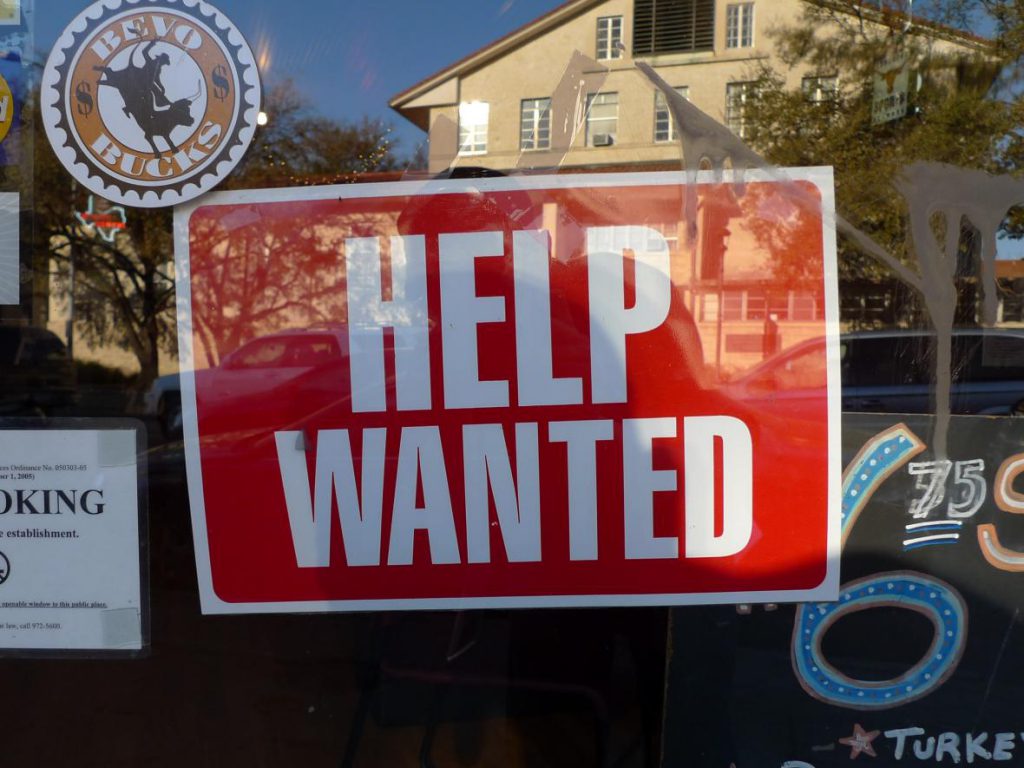All Indicators Show High-Demand For Wisconsin Workers
There are 112,000 more jobs than there are people to fill them says state's chief economist.

Help Wanted. Photo by Andreas Klinke Johannsen (CC BY-SA 2.0)
Despite low unemployment and high labor force participation, Wisconsin employers are struggling to fill hundreds of thousands of jobs. That’s given employees more power to bargain for what they want, like remote work, better benefits and higher wages.
“Wisconsin’s labor force is more engaged than the rest of the country, and I don’t care how you measure it. Whether it’s by gender or ethnicity, our labor force participation rates are higher than the U.S,” Wisconsin Department of Revenue Chief Economist John Koskinen said at an economic outlook roundtable last week.
Unemployment is also low, he said. According to DOR data, the unemployment rate in August was 3.1 percent, below the national rate of 3.7 percent.
But despite high participation, there are still over 200,000 job openings in the state, according to Koskinen.
“If we were to take the number of people that we have job openings for and subtract from that the number of people that are unemployed, we’d have 112,000 more job openings than we have people to fill them,” Koskinen said. “That’s twice the level we saw before the pandemic. So if we had every unemployed person in the right skill set in the right location in the right industry, we would still be short 112,000 people.”
According to a 2016 UW-Madison study, one of the long-term drivers of Wisconsin’s labor shortage is an aging population. A more recent analysis of Census data showed that, based on current trends, the number of working-age Wisconsin residents will fall by about 130,000 by 2030. A combination of people leaving the state and a lack of people moving into the state is also a factor, it said, along with a “skill mismatch.” That means not enough people have the right skills or education for certain jobs.
That shortage, which has become more acute during the pandemic, has led to high demand for workers and low rates of layoffs, said Dr. Nicholas Jolly, an economics professor at Marquette University.
That means companies are trying to hire more workers than there are people willing to do the work, Jolly said. And that’s given employees more power to bargain for what they want, like better benefits, higher wages and remote work. At the same time, the high need for workers has made it easier for unsatisfied employees to go elsewhere, Jolly said.
“So we’ve noticed this thing called ‘The Great Resignation’…people basically quitting their jobs in hopes of finding either new employment opportunities that have the benefits or the wages that they’re looking for,” he said, “or they’ve decided to leave their employer and basically stay out of the labor force.”
That has pushed wages up, Jolly said. According to Wisconsin DOR data, average hourly earnings have grown from $27.36 per hour before the pandemic to $29.72 per hour in August.
But there are signs that pressure is easing, according to Jolly.
“Wages this year are not growing the way that they were last year,” Jolly said. “So from data from January to August, wages this year are basically flat. Wages have only gone up about 0.13 percent.”
So far this year, Jolly said layoffs and discharges have risen roughly 27 percent, which is a sign that labor demand is slowing, and the market is on its way to equilibrium.
In a high-demand labor market, Wisconsin employers are struggling to fill over 200,000 jobs was originally published by Wisconsin Public Radio.



















